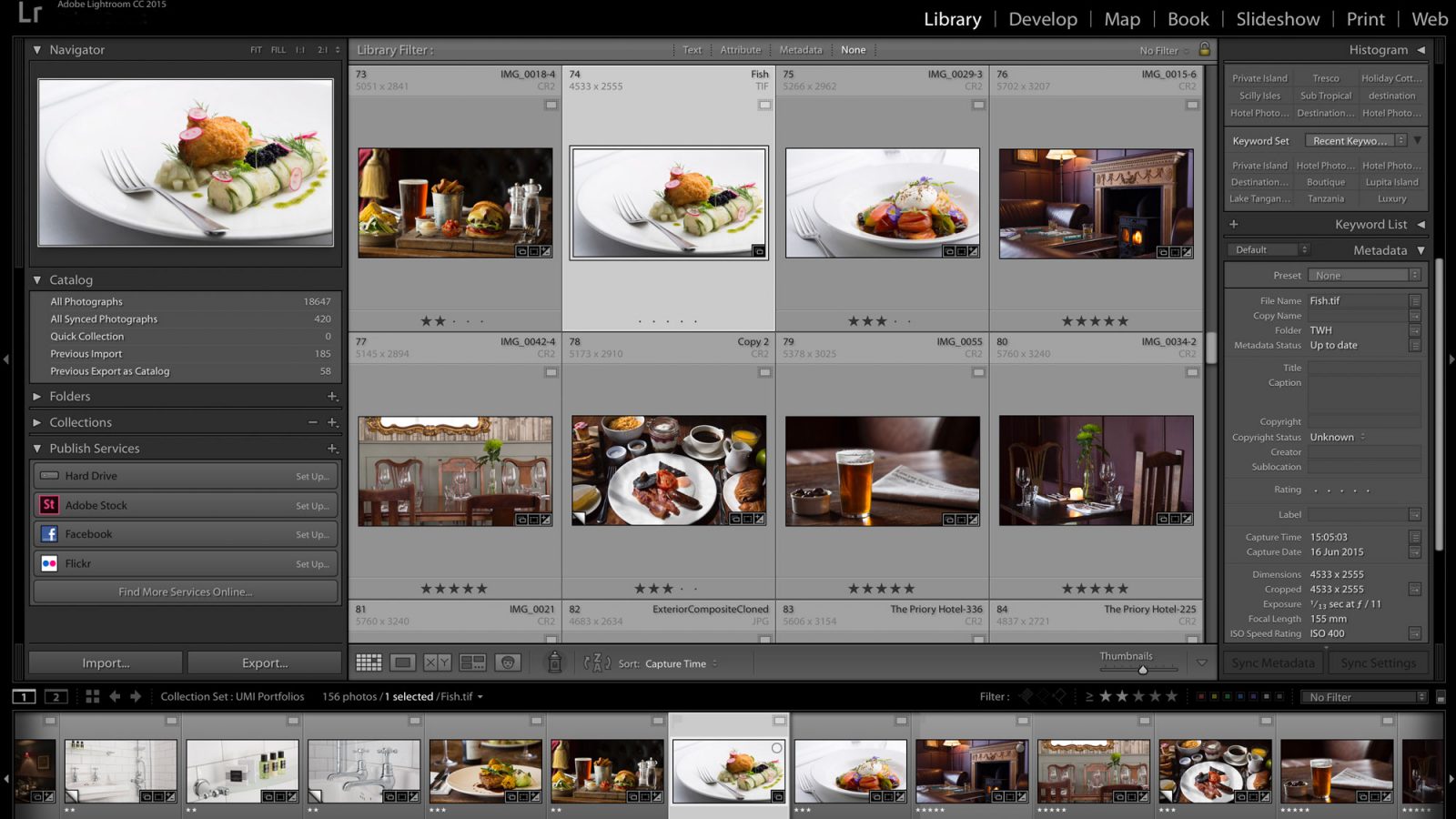Digital Asset Management or D.A.M. is a set of practices to help you keep on top you your properties photos, keep them organised and optimise them for various outputs. Such as websites, OTA’s and press requests.
This will usually require some form of management software. there are many avaiable, but in thins article I’m going to talk about Adobe Lightroom which is available as a stand alone program for both PC and Mac operating systems and is available for £119.

Importing photos
Once purchased and installed it’s simple to import all your photos from various locations into one systematic location on your computer, at import it suggests a few folder structures which can be implemented. I would recommend a Master folder, with relevant children folders that apply to your property.
Collections
Inside Lightroom in the library module. you have the option to create collections. here you can organise photos into specific photos of the rooms, food, lobby, gardens etc… You can also create an OTA collection where you put your top 25 images that you’ll upload to Booking.com, expedia etc… Another collection may be for Press and editorials.
Develop module
Here you can crop, adjust the exposure and set the aspect ratio. its unlikely you’ll need to do much more here, especially as if you are importing photos I have taken this will have been done for you.
Metadata
I think the single most important feature. Metadata can be thought of as the information written on the back of an old photograph in an old family album. You look at a picture of some distant relative turn it over and discover the date, location and who is in the picture has been written buy some diligent album maker. If this hadn’t been done the information would have been lost for ever and I might not know that my great uncle Charles, Liked sailing at Salcombe sailing club in 1932.
So, Metadata is text based information that is inside digital photos, which can be populates with lots of useful information about the photo and its contents.
Why would you do this? Well, primarily its because search engines haven’t developed eyes and even if they did its still very useful for them to have information about the photo. it also means that you can put your properties name, email, url physical address and G.P.S. location into every photo on your website. As far as SEO goes, you can load every images and have repeatable info and keywords without getting penalised.
I’m now going to list the fields you should populate.
Broad metadata fields – can bee applied to a large collection of images.
1. GPS Location
2. Physical address
3. Email address
4. Website address
5. Telephone number
6. Company owner
7. Copyright
8. Keywords
Image specific metadata fields – should only be applied to one image.
1. Title
2. Caption
3. Description
Applying this information its crucial to do this before exporting, uploading or emailing any images, as once they are out there it is nigh on impossible to back track.
